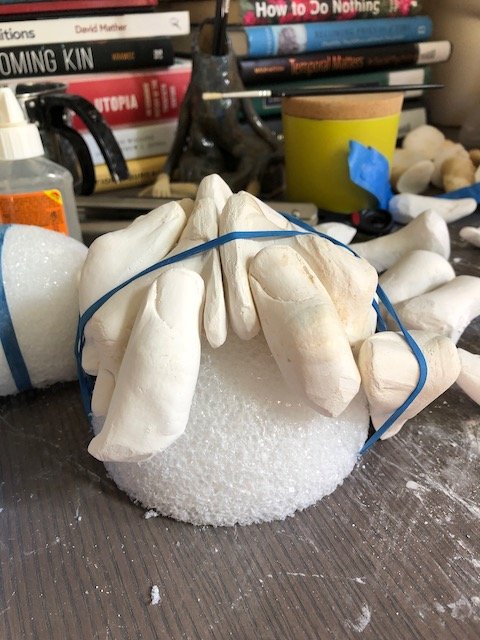ANIMAL INTELLIGENCE
glass, plaster, plastic, acromyrmex versicolor
What is intelligence? It's a is a thing we’re supposed to aspire to, but it also is defined fairly narrowly: IQ scores, the ability to read long novels quickly, solving puzzles. Intelligen’re told. They’e world, we’re told. They’re the best of us, the ones we should trust and listen to.
Traditional scientific ideas of what intelligence looks like fly in the face of what the non-human animals of this world are capable of. Certain species of plants can recognize their own genetic kin. Dolphins in captivity have learned how to deceive their trainers. Crickets manufacture acoustic objects like baffles and burrows to make their mating calls louder. Honeybees can recognize human faces.
But scientists crave consistant measurement (I would know, I used to be one). Often, we mistake things we can measure for things that matter. And this is even more true when it comes to trying to understand different kinds of intelligences. Instead of trying to learn how pigs might see the world, we force them to play video games. We teach human sign language to chimpanzees instead of trying to undertand their ways of communication. When they fail to pass the mirror test, or recognize a human face, we write them off.
This piece is a living sculpture — the brain within the glass head (made of 98 plaster casts of my thumbs — the human thumb, and its opposable nature, being a thing that supposedly sets us apart from non-human creatures as special and smarter somehow) serves as a formicaria for a colony of desert leafcutter ants. As the colony expands and lives, it will use the thumbs as a substrate on which it grows a special fungus to eat — one of the ant species that engages in what is essentially agriculture. Eventually, you will no longer be able to see my thumbs (or brain) at all.










